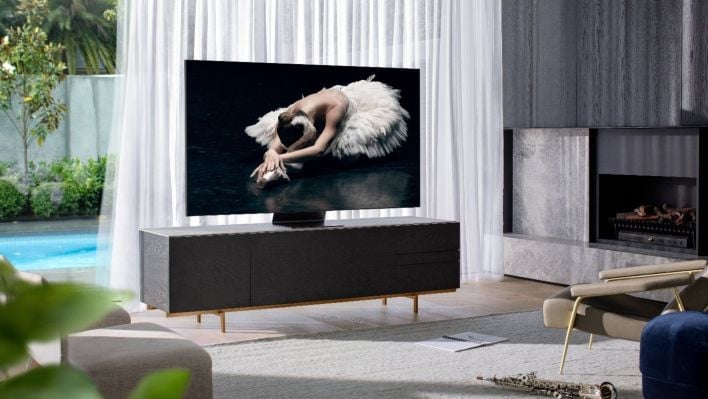- cross-posted to:
- technology@beehaw.org
- cross-posted to:
- technology@beehaw.org
A new study published in Nature by University of Cambridge researchers just dropped a pixelated bomb on the entire Ultra-HD market, but as anyone with myopia can tell you, if you take your glasses off, even SD still looks pretty good :)



So, a 55-inch TV, which is pretty much the smallest 4k TV you could get when they were new, has benefits over 1080p at a distance of 7.5 feet… how far away do people watch their TVs from? Am I weird?
And at the size of computer monitors, for the distance they are from your face, they would always have full benefit on this chart. And even working into 8k a decent amount.
And that’s only for people with typical vision, for people with above-average acuity, the benefits would start further away.
But yeah, for VR for sure, since having an 8k screen there would directly determine how far away a 4k flat screen can be properly re-created. If your headset is only 4k, a 4k flat screen in VR is only worth it when it takes up most of your field of view. That’s how I have mine set up, but I would imagine most people would prefer it to be half the size or twice the distance away, or a combination.
So 8k screens in VR will be very relevant for augmented reality, since performance costs there are pretty low anyway. And still convey benefits if you are running actual VR games at half the physical panel resolution due to performance demand being too high otherwise. You get some relatively free upscaling then. Won’t look as good as native 8k, but benefits a bit anyway.
There is also fixed and dynamic foveated rendering to think about, with an 8k screen, even running only 10% of it at that resolution and 20% at 4k, 30% at 1080p, and the remaining 40% at 540p, even with the overhead of so many foveation steps, you’ll get a notable reduction in performance cost. Fixed foveated would likely need to lean higher towards bigger percentages of higher res, but has the performance advantage of not having to move around at all from frame to frame. Can benefit from more pre-planning and optimization.
A lot of us mount a TV on the wall and watch from a couch across the room.
And you get a TV small enough that it doesn’t suit that purpose? Looks like 75 inch to 85 inch is what would suit that use case. Big, but still common enough.
I’ve got a LCD 55" TV and a 14" laptop. Ok the couch, the TV screen looks to me about as big as the laptop screen on my belly/lap, and I’ve got perfect vision; on the laptop I can clearly see the difference between 4k and FULL HD, on the TV, not so much.
I think TV screens aren’t as good as PC ones, but also the TVs’ image processors turn the 1080p files into better images than what computers do.
Hmm, I suppose quality of TV might matter. Not to mention actually going through the settings and making sure it isn’t doing anything to process the signal. And also not streaming compressed crap to it. I do visit other peoples houses sometimes and definitely wouldn’t know they were using a 4k screen to watch what they are watching.
But I am assuming actually displaying 4k content to be part of the testing parameters.